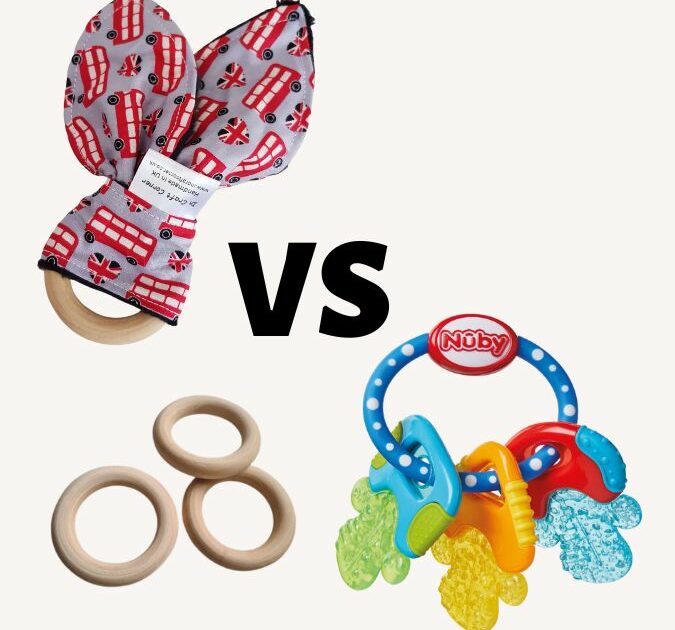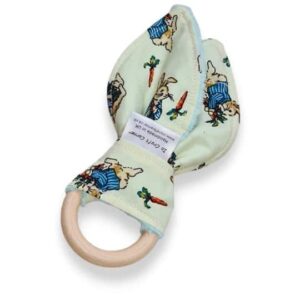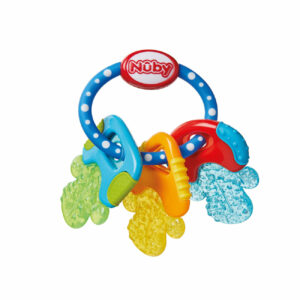
Wooden Teething Ring vs Plastic Teething Ring
Both wooden and plastic teething rings have their own advantages and disadvantages. Ultimately, the choice between the two depends on your personal preference and the specific needs of your baby.
A teething toy is commonly given at your baby from 3-4 months old, when you see they are starting to put everything in their mouth, or you notice their teeth are starting to come through.
Here are some things to consider between the two:
Texture
Wooden teething rings are often chosen by parents who prefer a more natural and organic option. Wood has a natural texture that babies can find soothing, and it can provide a different sensory experience compared to plastic.
Plastic teething rings, on the other hand, may have a smoother surface that some babies prefer. If they don’t get on with one that might prefer the other type. Having one of each to see which one they prefer can be a good option.
Safety
Safety is a very important consideration when choosing a teething ring. Ensure that whichever option you choose complies with safety standards and is free from harmful chemicals such as BPA, phthalates, or PVC. Look for teething rings that are specifically labeled as non-toxic and baby-safe.
If choosing the wooden ring option, make sure the wooden ring is untreated. Untreated wooden rings have all the natural benefits without any chemical coatings added to them. Whether its a big brand or a small business, all teething products should be CE/UKCA marked depending on the laws for your country. This appears more in small businesses where some do not go through the UKCA process and there for not tested to be safe enough to given to children.
Durability
Wooden teething rings are generally more durable and long-lasting compared to plastic teething rings. They can withstand more chewing and may be less likely to break or crack. However, it’s important to regularly inspect wooden teething rings for any signs of wear or damage. If any damage visable its best to replace the teething toy immediately.
Cleaning
Plastic teething rings can be easier to clean since they can be washed with warm soapy water or placed in the dishwasher (check the manufacturer’s cleaning instructions).
Wooden teething rings require more careful cleaning to avoid water damage. It’s recommended to wipe them clean with a damp cloth and allow them to air dry. Submerging them for long periods in water can cause them to deform. If they are not properly dried, bacteria can form over a long period.
Sensory Stimulation
Some wooden teething rings may offer additional sensory stimulation, such as different shapes, textures, or even the sound they produce when chewed. If the wooden ring had a fabric element it can provide a comforting texture and other colours to stimulate their sense.
Plastic teething rings may come with various features like ridges or bumps that can provide different sensations for your baby. Sometime you can put your plastic teething toy in the freezer and then given to the baby to help with gum pains.
Remember, every baby is unique, and what works for one may not work for another. It can be helpful to try different products and see which your baby prefers. You’ll quickly know by their interaction with the toy if it’s something they really love or not.
If you need more help deciding which to go for, talk to your health visitor or other professional for their thoughts.


